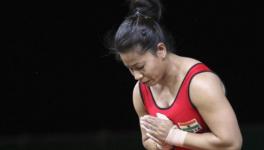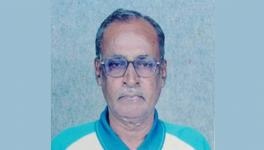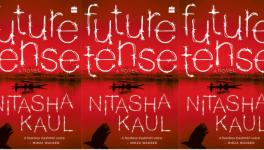The Artist as Activist

Pablo Picasso, ‘Guernica’
Theodore Adorno’s famous statement “Poetry is impossible after Auschwitz” beautifully sums up the inevitable impact of politics on art. The statement was certainly not literal. He must have meant that poetry – and art in general – can no more remain what it was; it cannot pretend ignorance about what is happening in the world and continue to celebrate roses and wine. It was an invitation to the artists, in Neruda’s words, to “come and see the blood in the streets.” Bertolt Brecht once asked in a poem, “Will there be poetry in bad times?” and answered, “Yes, poetry about bad times.” The poetry of the Holocaust proves this point. It was a new kind of poetry – “a poetry for the horror-stricken, for those abandoned to butchery, for survivors, created out of a remnant of words, salvaged words, out of uninteresting words from the great rubbish dump”, in the words of the post-war Polish poet, Tadeusz Rozewicz. I remember Picasso’s statement that art is not meant to decorate drawing rooms and the artist is not one who reduces the sun into a yellow spot but one who transforms a yellow spot into the sun.
The art of witness has acquired special relevance in our times of violence. Baudrillard said that globalization is the greatest form of violence as it destroys local cultures and languages, is a monologue of power, sentences the people of the third world countries to cultural amnesia and historical mutilation, and destroys indigenous modes of knowledge, native cosmologies and regional forms of art. It also appropriates people’s intangible heritage as raw material for the culture industry, destroys cultural diversity leading to an unhealthy standardization and creates crises of identities.
The source of violence in our times are nation-states that promote jingoism; Western concepts that hierarchise knowledge and pursue the Orientalist agenda where the East is looked upon as West’s past and the West as East’s future; patriarchy that oppresses and marginalizes women, transgenders, homosexuals and bisexuals, and promotes violence in the name of machismo, racism and casteism; religious fundamentalisms that empty religions of all their spirituality turning them into instruments of exploitation and sources of power; techno-fascism that ruins the environment; scientism that thinks science is the only way to truth much as religions claim, and multinational capitalism that impoverishes the majority materially as well as culturally, forms of what Umberto Eco calls “Ur-Fascism”, characterised by anti-intellectualism, fear of difference, intolerance towards dissent, hatred of pluralism and scorn for the weak.
Art is inevitably pitched against violence of every kind and cannot survive without fighting status quo-ist ideas and norms including aesthetic concepts and canons. So it is not merely a political question, but also one of its own survival, as proved by many incidents in the last few years like the attack on M F Hussain leading to his death in exile and attacks on film-makers, playwrights and dancers such as Deepa Mehta, Anand Patwardhan, Habib Tanvir, H.S. Shivaprakash, Hiren Gandhi, Mallika Sarabhai and many others. Bans on writers such as Salman Rushdie and Taslima Nasreen, the murder of Safdar Hashmi and the attack on an art exhibition in Baroda are a few more examples of the fascist hatred of freedom and democracy.
Artists have always tried to resist oppression; by radicalising representation (Sudhir Patwardhan, Laxma Goud, Ganesh Pyne, Bikash Bhattacharjee), representing the transformative powers of men and women (K.S. Radhakrishnan), interrogating the conservative sexual ideal (Bhupen Khakkar), using the existing repertoire in new and different ways (Jamini Roy, Ghulam Sheikh, Sreenivasulu, Binode Behari Mukherjee, K.G. Subramanian), relocating and re-visioning history (Nilima Sheikh, Riyas Komu, Alex Mathew), bringing in class through the representation of labouring bodies (Somnath Hore, Ramkinkar Baij), problematising the real and its relation to art and society (F.N. Souza), turning art confrontational (T.V. Santosh, N.N. Rimson, Jyoti Basu, Kobita Mukherjee, Vivan Sundaram, Nalini Malanai, Gogi Saroj Pal), questioning the sacred (M.F. Hussain), and inventing new forms that resist the market such as installation and video-art.
The artists today need to reject all prescriptive and normative approaches and develop a non-atavistic art of concern, opposition and awareness that is methodologically various and polyphonic. Art critics and historians are invited to re-examine our art history organically: its dialectical relationship of form and content; the diverse ideological configurations behind movements and concepts in art; the impact of market forces on the shape of art; and the ways in which art confronts the State and other forces that try to use it for their own ends. The latter engagement would develop a critique of hegemonic ideas and institutions. It examines the representation of difference (class, caste, gender and race) to establish connections among societal and artistic movements. At the same time it would mean re-examining the canons to reformulate the idea of art – with due acknowledgement of the art practices of the people – and end the divide between the “high” and the “low”, and the “elite” and the “popular” in art.
In short, we need a heterogeneous, inclusive and dynamic concept of art which rises above sectarian considerations, and recognises our multiple identities through a flexibility of techniques and strategies in order to fight the culture of silence and consent that is enveloping us and to confront the challenges and temptations of a greedy consumer industry and a blood-thirsty revivalism.
{K. Satchidanandan is perhaps the most widely translated and anthologized of contemporary Indian poets. His books in English translation are While I Write: New and Selected Poems (2011), Misplaced Objects and Other Poems (2014) and The Missing Rib (2016). Read his essays on Indian Cultural Forum here, and his poems and translations on Guftugu here.}
Courtesy: http://indianculturalforum.in
Image: Pablo Picasso, ‘Guernica’/ Wikipedia
Disclaimer: The views expressed here are the author's personal views, and do not necessarily represent the views of Newsclick.
Get the latest reports & analysis with people's perspective on Protests, movements & deep analytical videos, discussions of the current affairs in your Telegram app. Subscribe to NewsClick's Telegram channel & get Real-Time updates on stories, as they get published on our website.
























